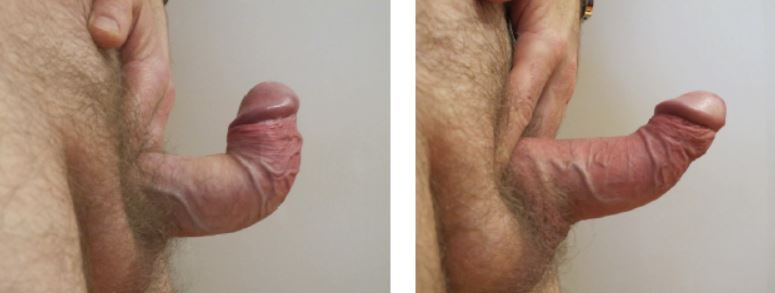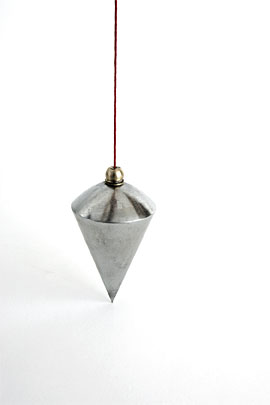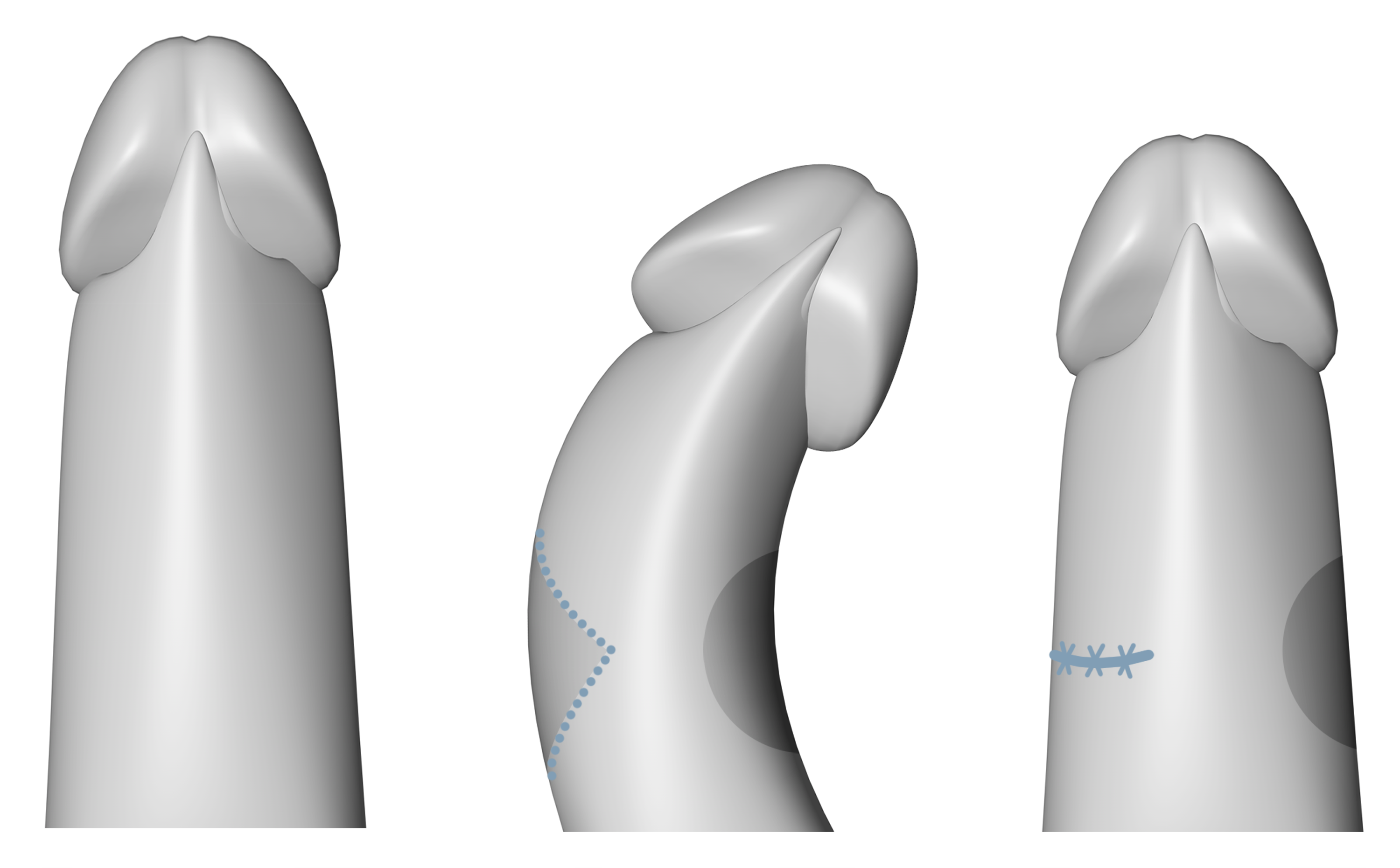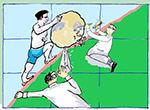
Inherent and acquired penile curvature (Peyronies disease)
Inherent curvature of the penis (penile deviation)
It is normal that an erection is not absolutely straight and is characterised by a more or less strong curvature. The assumed cause for curvatures of the penile tissue is a temporary lack of testosterone during pregnancy, unless there is a malformation of the urethra and the cavernous bodies (hypospadias).
A slight penile curvature does not limit the man regarding sexual intercourse. However, there may be a desire for straightening due to aesthetical respectively psychological reasons, particularly regarding downward curvatures or curvatures to one side. On the contrary, moderate upward curvaturesmay be quite favoured as an optical symbol for virility, because an upwardly bent member is characterised by a subjectively steeper erection when compared to a straight member with the same erectile angle.
Erectile angles of curvature of more than approx. 30 degrees (e.g. Peyronie) make the insertion into the vagina harder and may cause pain for the partner. Even stronger curvatures (Peyronies disease) may render the penetration impossible so that the person affected must ultimately go without normal sexuality with this disease. Such a pronounced penile deviation is often operated by removing relatively excessive tissue with a tolerable loss of substance of the organ (so-called Nesbit technique).
Acquired penile curvature (Peyronie / IPP)
Regarding a modification of the penile tissue named after its discoverer Peyronie (also Induratio penis plastica, IPP) a strong curvature or a strong angularity of up to 90 degrees frequently occurs with the consequence of painful erections, erectile dysfunctions, or loss of sensitivity of the glans. The organ may also shorten significantly.
Peyronies disease is a diagnostically palpable induration (so-called "plaque"), presumably a consequence of an inflammation between the cavernous bodies organ and their adventitia (tunica). Peyronie occurs in people between 20 and 80 years of age and must not be confused with an inherited penile curvature (see above).
Treatment options of peyronie
The medical treatment of peyronies disease with non-specific preparations or physical therapies (radiotherapy, ultrasound, laser) do not always achieve the desired symptomatic improvement or cure.
There are different operation methods in order to treat a strong plaque-related curvature of the organ. The removal of healthy tissue on the opposite side of the plaque is an established method within the framework of which the penis will be shortened additionally, however (so-called Nesbit technique). The removal and substitution of the plaque by healthy tissue found in the body or collagen is far more expensive. The cavernous bodies can be replaced by an implant as the ultimate option.
PeniMaster for acquired and inherited penile curvature
The penile extenders PeniMaster and PeniMaster PRO can generally help in reducing curvatures of the penis from peyronie.
The application of PeniMaster at the beginning of Peyronies disease can counteract a progressive penis curvature. Even before a penis is straightened by an operation within the framework of Peyronies disease or inherited penile deviation, wearing an expander may already result in an established curvature being straightened so that less healthy tissue must be removed from the member for compensation purposes and the penile shortening may be smaller. An extender may also be used to counteract the retractive scar-healing procedure and therefore help establishing the operation result also after peyronie operation.
Controlled clinical study in the British Journal of Urology: PeniMaster PRO is safe and effective in the treatment of Peyronie’s disease (curvature of the penis) - the device can be used as an alternative to an operation

| Peyronie's penis before treatment with PeniMaster PRO |
after three months of treatment with PeniMaster PRO without additional medication or other therapies |

Penile straightening operations

Regarding a so-called acquired penile curvature (Peyronie disease) tissue lumps form on one side of the penis (semi-circle) while the other side is no longer able to erect to the full extent. The surgeon will cut out a piece from the side that has already less tissue (triangle) and will seam the side together afterwards. The organ will be straighter afterwards, but it will also be significantly shorter (mostly several centimetres in erection) after peyronie operation.
PeniMaster PRO: British Journal of Urology (BJUI)
Volume123, Issue 4,
i-v, 557-739, April 2019

